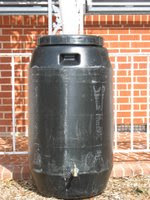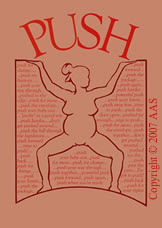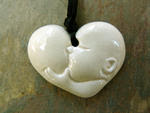Today on Homebirthdebate.blogspot.com, after months of debating the very same statistic around and around, Violent asked:
Just to be clear on this, the numbers that you constantly refer to are neonatal deaths (hospital vs. homebirth), correct? The numbers you are using are:1/1000 (deaths/per birth) hospital2/1000 (deaths/ per birth) home. Is this correct, and the correct language? 12.15.06 - 6:55 pm #
From Amy Tuteur, MD:
Violet:
"Is this correct, and the correct language?"
It depends on the study and it depends on the year. The results of the Johnson and Daviss study showed a neonatal death rate of 2/1000. I have been quoting a hospital death rate in 2000 of less than 1/1000; it's probably substantially lower than that. That's because Johnson and Daviss removed congenital anomalies from the homebirth group. Once you remove congenital anomalies from the hospital group, the rate is probably 0.5/1000 or even less.
Safe Baby Partners:
I am wondering what is the point of this debate on NEONATAL death rate which by definition is within the first twenty-eight days of life. First, the whole debate is based on "The neonatal death rate is 1/1000" and second, she is not addressing the research data about the increased rate of NEONATAL death due to cesarean section.
Has anyone even seen the study or documentation of the hospital neonatal death rate of 1/1000 -- that Dr. now Amy says here is "PROBABLY 0.5/1000 or less" after removing congenital anomalies? PROBABLY!?! She's using, oh, um, PROBABILITY now to determine the neonatal death rate in the hospital after removing congenital anomalies? Without a control group? Without citing the literature. Lord o' Mercy. Let me pull one out of the air. I think, uhm, that she's probably, uhm, about 95% wrong.
What is this "fight" about and how will the winner know they have won? And, what is the prize? Fewer "dead babies," as so warmly referred to the debate. Not likely. What is so important to the debaters to repeat over and over the same arguements and emotional pleas that are more rudely criticized than the post before? As one poster quotes Dr. Phil, "whadder ya'll gettin' outta this?"
AND, from where does this 1/1000 stat come? Has anyone seen the source of the 1/1000 statistic? Sorry, it could have been repeated numerous times and it went right over my head, because I am more concerned about the affects of drugs and interventions on the live babies who must then live with it through out their lives. I am still waiting for one itty-bitty piece of research to show that narcotics were shown to be safe for the laboring and birthing baby. Then I'll pull out my own "one semester of college statistics" knowledge.
Meanwhile, curious about the 1/1000 hospital neonatal rate Dr. Amy is using to make some point, I was visiting the "How healthy is America?" The 29th report from the Health, United States series, by the Centers for Disease Control and Prevention (CDC). http://www.ncbi.nlm.nih.gov/books/bv.fcgi?rid=healthus05.table.372 . I am a little more trusting of their stats than what the homebirthdebate blog reports. The report shows the NEONATAL DEATH RATE in the US in 2000-2002 was 4.6. One can only logically presume these are hospital births? The INFANT MORTALITY RATE in 2000-2002 was 7.0. Either way that is 11.6/1000 babies died in the US in 2002. It doesn't differentiate according to where babies were born, but with a 1% homebirth rate the number of deaths at homebirth are small, I presume. How many were born by cesarean? Anyone tracking that?
Where is the concern and the debate over the research this fall over the cesarean news?
"The neonatal death rate for Caesarean birth among low-risk women was 1.77 deaths per 1,000 live births. The comparable rate among vaginal births was 0.62. Babies are up to three times more likely to die soon after delivery if their mothers choose a Caesarean section rather than a normal birth, a big American study has shown."
http://www.timesonline.co.uk/article/0,,8122-2346344,00.html
The procedure is performed in the United States on nearly one of every four babies delivered -- more than 900,000 babies each year. http://www.healthatoz.com/healthatoz/Atoz/common/standard/transform.jsp?requestURI=/healthatoz/Atoz/ency/cesarean_section.jsp. Maybe someone more mathematical than I can figure out how may babies are likely to die in 900,000 cesarean births.
Folks, the numbers for SAFER birth in the hospital just ain't adding up. How can the cesarean birth rate be almost twice what Amy says the hospital rate is, while here it says vaginal births accounted for only 0.62.
I think the fox has the hens scratching and cackeling for a reason. DISTRACTION. Whadder ya'll gettin' out of it?"
The Other Side of the Glass
Part One was officially released June 2013 in digital distribution format.
To purchase to to www.theothersideoftheglass.com
If you were a donor and want to download your copy send an email to theothersideoftheglassfilm@gmail.com.
The trailer
Friday, December 15, 2006
Subscribe to:
Post Comments (Atom)
"Soft is the heart of a child. Do not harden it."
A public awareness reminder that things that happen behind the scenes, out of our sight, aren't always as rosy as we might think them to be. Perhaps its a restaurant cook who accidentally drops your burger
on the floor before placing it on the bun and serving it to you. Here it's an overworked apathetic (pathetic) nurse giving my newborn daughter her first bath.
Please comment and rate this video, so as to insure that it is viewed as widely as possible, perhaps to prevent other such abuse. -- The mother who posted this YouTube. How NOT to wash a baby on YouTube
Are you going to try to tell me that "babies don't remember?" There is no difference to this baby's experience and the imprinting of her nervous system/brain and one that is held and cleaned by the mother or father either at the hospital or at home?
By the way, this is probably NOT the baby's first bath. The nurse is ungloved. Medical staff protocol is that they can't handle a baby ungloved until is has been bathed (scrubbed if you've seen it) because the baby is a BIO-HAZARD -- for them. Never mind that the bio-hazard IS the baby's first line of defense against hospital germs.
Missouri Senator Louden Speaks
Finally, A Birth Film for Fathers
Part One of the "The Other Side of the Glass: Finally, A Birth Film for and about Men" was released June, 2013.
Through presentation of the current research and stories of fathers, the routine use of interventions are questioned. How we protect and support the physiological need of the human newborn attachment sequence is the foundation for creating safe birth wherever birth happens.
Based on knowing that babies are sentient beings and the experience of birth is remembered in the body, mind, and soul, fathers are asked to research for themselves what is best for their partner and baby and to prepare to protect their baby.
The film is designed for midwives, doulas, and couples, particularly fathers to work with their caregivers. Doctors and nurses in the medical environment are asked to "be kind" to the laboring, birthing baby, and newborn. They are called to be accountable for doing what science has been so clear about for decades. The mother-baby relationship is core for life. Doctors and nurses and hospital caregivers and administrators are asked to create protocols that protect the mother-baby relationship.
Men are asked to join together to address the vagaries of the medical system that harm their partner, baby and self in the process of the most defining moments of their lives. Men are asked to begin to challenge the system BEFORE they even conceive babies as there is no way to be assured of being able to protect his loved ones once they are in the medical machine, the war zone, on the conveyor belt -- some of the ways that men describe their journey into fatherhood in the medicine culture.
Donors can email theothersideoftheglassfilm@gmail.com to get a digital copy.
Through presentation of the current research and stories of fathers, the routine use of interventions are questioned. How we protect and support the physiological need of the human newborn attachment sequence is the foundation for creating safe birth wherever birth happens.
Based on knowing that babies are sentient beings and the experience of birth is remembered in the body, mind, and soul, fathers are asked to research for themselves what is best for their partner and baby and to prepare to protect their baby.
The film is designed for midwives, doulas, and couples, particularly fathers to work with their caregivers. Doctors and nurses in the medical environment are asked to "be kind" to the laboring, birthing baby, and newborn. They are called to be accountable for doing what science has been so clear about for decades. The mother-baby relationship is core for life. Doctors and nurses and hospital caregivers and administrators are asked to create protocols that protect the mother-baby relationship.
Men are asked to join together to address the vagaries of the medical system that harm their partner, baby and self in the process of the most defining moments of their lives. Men are asked to begin to challenge the system BEFORE they even conceive babies as there is no way to be assured of being able to protect his loved ones once they are in the medical machine, the war zone, on the conveyor belt -- some of the ways that men describe their journey into fatherhood in the medicine culture.
Donors can email theothersideoftheglassfilm@gmail.com to get a digital copy.
Buy the film at www.theothersideoftheglass.com.
The film focuses on the male baby, his journey from the womb to the world and reveals healing and integrating the mother, father, and baby's wounded birth experience. The film is about the restoring of our families, society, and world through birthing loved, protected, and nurtured males (and females, of course). It's about empowering males to support the females to birth humanity safely, lovingly, and consciously.
Finally, a birth film for fathers.
The film focuses on the male baby, his journey from the womb to the world and reveals healing and integrating the mother, father, and baby's wounded birth experience. The film is about the restoring of our families, society, and world through birthing loved, protected, and nurtured males (and females, of course). It's about empowering males to support the females to birth humanity safely, lovingly, and consciously.
Finally, a birth film for fathers.
What People Are Saying About the FIlm
Well, I finally had a chance to check out the trailer and .. wow! It's nice that they're acknowledging the father has more than just cursory rights (of course mom's rights are rarely acknowledged either) and it's great that they're bringing out the impact of the experience on the newborn, but I'm really impressed that they're not shying away from the political side.
They are rightly calling what happens in every American maternity unit, every day, by its rightful name - abuse. Abuse of the newborn, abuse of the parents and their rights, abuse of the supposedly sacrosanct ethical principal of patient autonomy and the medico-legal doctrine of informed consent, which has been long ago discarded in all but name. I love it!
In the immortal words of the "shrub", "bring it on!" This film needs to be shown and if I can help facilitate or promote it, let me know.
Father in Asheville, NC
Thanks for sharing this. It was very touching to me. I thought of my brother-in-law standing on the other side of the glass when my sister had to have a C-section with her first child because the doctor was missing his golf date. I'll never forget his pacing back and forth and my realizing that he was already a father, even though he hadn't been allowed to be with his son yet.
Margaret, Columbia, MO
They are rightly calling what happens in every American maternity unit, every day, by its rightful name - abuse. Abuse of the newborn, abuse of the parents and their rights, abuse of the supposedly sacrosanct ethical principal of patient autonomy and the medico-legal doctrine of informed consent, which has been long ago discarded in all but name. I love it!
In the immortal words of the "shrub", "bring it on!" This film needs to be shown and if I can help facilitate or promote it, let me know.
Father in Asheville, NC
OMG'ess, I just saw the trailer and am in tears. This is so needed. I watch over and over and over as fathers get swallowed in the fear of hospitals birth practice. I need a tool like this to help fathers see how very vital it is for them to protect their partner and baby. I am torn apart every time I see a father stand back and chew his knuckle while his wife is essentially assaulted or his baby is left to lie there screaming.
Please send me more info!!!!
Carrie Hankins
CD(DONA), CCCE, Aspiring Midwife
720-936-3609
Thanks for sharing this. It was very touching to me. I thought of my brother-in-law standing on the other side of the glass when my sister had to have a C-section with her first child because the doctor was missing his golf date. I'll never forget his pacing back and forth and my realizing that he was already a father, even though he hadn't been allowed to be with his son yet.
Margaret, Columbia, MO
In case you don't find me here
Soon, I'll be back to heavy-duty editing and it will be quiet here again. I keep thinking this blog is winding down, and then it revives. It is so important to me.
I wish I'd kept a blog of my journey with this film this past 10 months. It's been amazing.
I have a new blog address for the film, and will keep a journal of simple reporting of the journey for the rest of the film.
www.theothersideoftheglassthefilm.blogspot.com
I'll be heading east this week to meet with a group of men. I plan to post pictures and clips on the film blog.
I'll keep up here when I can -- when I learn something juicy, outrageous, or inspiring related to making birth safer for the birthing baby.
I wish I'd kept a blog of my journey with this film this past 10 months. It's been amazing.
I have a new blog address for the film, and will keep a journal of simple reporting of the journey for the rest of the film.
www.theothersideoftheglassthefilm.blogspot.com
I'll be heading east this week to meet with a group of men. I plan to post pictures and clips on the film blog.
I'll keep up here when I can -- when I learn something juicy, outrageous, or inspiring related to making birth safer for the birthing baby.
Review of the film
Most of us were born surrounded by people who had no clue about how aware and feeling we were. This trailer triggers a lot of emotions for people if they have not considered the baby's needs and were not considered as a baby. Most of us born in the US were not. The final film will include detailed and profound information about the science-based, cutting-edge therapies for healing birth trauma.
The full film will have the interviews of a wider spectrum of professionals and fathers, and will include a third birth, at home, where the caregivers do a necessary intervention, suctioning, while being conscious of the baby.
The final version will feature OBs, RNs, CNMs, LM, CPM, Doulas, childbirth educators, pre and perinatal psychologists and trauma healing therapists, physiologists, neurologists, speech therapists and lots and lots of fathers -- will hopefully be done in early 2009.
The final version will include the science needed to advocated for delayed cord clamping, and the science that shows when a baby needs to be suctioned and addresses other interventions. Experts in conscious parenting will teach how to be present with a sentient newborn in a conscious, gentle way -- especially when administering life-saving techniques.
The goal is to keep the baby in the mother's arms so that the baby gets all of his or her placental blood and to avoid unnecessary, violating, and abusive touch and interactions. When we do that, whether at home or hospital, with doctor or midwife, the birth is safe for the father. The "trick" for birthing men and women is how to make it happen in the hospital.
The full film will have the interviews of a wider spectrum of professionals and fathers, and will include a third birth, at home, where the caregivers do a necessary intervention, suctioning, while being conscious of the baby.
The final version will feature OBs, RNs, CNMs, LM, CPM, Doulas, childbirth educators, pre and perinatal psychologists and trauma healing therapists, physiologists, neurologists, speech therapists and lots and lots of fathers -- will hopefully be done in early 2009.
The final version will include the science needed to advocated for delayed cord clamping, and the science that shows when a baby needs to be suctioned and addresses other interventions. Experts in conscious parenting will teach how to be present with a sentient newborn in a conscious, gentle way -- especially when administering life-saving techniques.
The goal is to keep the baby in the mother's arms so that the baby gets all of his or her placental blood and to avoid unnecessary, violating, and abusive touch and interactions. When we do that, whether at home or hospital, with doctor or midwife, the birth is safe for the father. The "trick" for birthing men and women is how to make it happen in the hospital.








1 comment:
Hi Janel,
Sorry it has taken me so long to post. We’re still recovering from Mother Nature’s sport with us (she has a wry sense of humor).
I cannot be sure as I haven’t seen an explicit reference, but I suspect the other blogger is referencing the MacDorman Retrospective Study from which we get a Neonatal Mortality Rate (NMR) of ~0.6/1000 for vaginal births and ~1.7/1000 for C/S and an average of ~1/1000 considering the C/S rate.
Just looking at this one aspect of safety, it seems to me that what we really want to know is how those 5400 home births in Johnson and Daviss’ study (with those babies and those pelvises) would have turned out in their hospitals. We can never know this. With a lot of work, it is conceptually possible to construct a reference group (perhaps retrospectively) that considers all of the factors that might influence the outcome. While feasible, I’m not sure this is practical. The other blogger, and any like-minded folks, will always have rocks to throw. Personally, I don’t object to using a “representative” value of 1/1000 neonatal deaths for low risk women in hospital and I judge the corresponding home birth results as indifferent. By my simple way of thinking, I believe it is pointless to try and beat the heck out of the numbers looking for percent differences.
The other blogger was not inclined to discuss taking safety a step further technically and start counting excess miscarriages from previous C/S as dead babies (pardon the nomenclature) along with the NMR. It seems to me that we could count every hysterectomy resulting from the excess C/S rate as a (lost opportunity) dead baby, and so on. I think it would be very interesting to see the results of a composite safety index.
Take Care,
Russ
Post a Comment